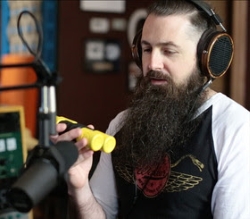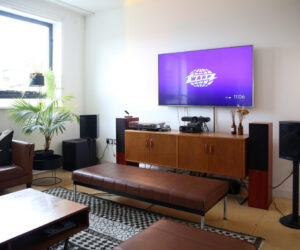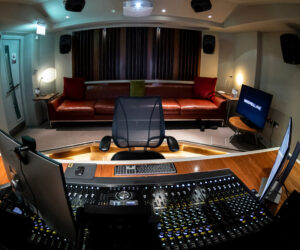By now, you’ve probably seen and heard the new global Coca-Cola commercial “Anthem,” with its “Taste the Feeling” theme song and soundtrack by composer/producer/sound designer Scott Fritz using Studio One 3 from PreSonus.
“Taste the Feeling” was co-written by Fritz, Josh Jones, and Jeremy Bircher, who together form the production team Space Camp.
That Fritz produced a gorgeous soundtrack for the Coke commercial should be no surprise; the Chicago-based studio veteran has composed, produced, and designed sounds for a wide assortment of commercials, music libraries, and album projects. His recent client list includes such companies as Facebook, Warner/Chappell, Guitar Center/GC Pro, Sleeping Giant Records, Beachbody, and of course Coca-Cola.
That the owner of Chicago production house Stranded on a Planet created the spot in PreSonus Studio One 3 Professional isn’t surprising either once you understand how he works.
“I use Studio One for everything I do for Coca-Cola,” Fritz begins. “Studio One lets me work really quickly. I like the ease of dragging-and-dropping and transforming things, and the timestretch engine is excellent. I do a lot of library work and corporate work in general, much of it centered on virtual instruments, and I do a lot of exporting. Many library pieces are done in multiple keys, so transposition is important. With Studio One, it’s fast and easy to render things, export, transform, transpose, edit, and so on. Track Transform is very powerful! The ease of automation assignment is a big deal, too; the way automation is handled is so far beyond other DAWs that it’s laughable.”
Fritz used a competing DAW for a long time and became adept at it. “But,” he says, “too many things were tedious to accomplish, with lots of clicks and extra steps. When I got into more deadline-sensitive work, those things became more apparent. I had a library project for Warner/Chappell and decided to do the whole thing in Studio One, and by the time I was done, I could not use my old DAW anymore.”
With commercials, Fritz notes, the cuts change frequently. He’ll start with a 60-second cut and then create 30-second and 15-second cuts. “Studio One 3’s Scratch Pads are great for that.” he enthuses. “I work with a piece, drag it into the Scratch Pad, and do 30 and 15-second edits in the same project, with all the same instruments and tracks. And the new Arranger Track is handy for mocking things up and rearranging parts of songs to see how they flow with the edits. As cuts change, I can adapt.”
Fritz often transforms Instrument tracks to audio once he gets the playback version he likes. “Then,” he explains, “if the client says something like, ‘we really like this, can you bring this part out and add some violin there,’ with a click I can call up the instruments and edit their content. I don’t have to search for instruments and go through the tedious process I’ve experienced with other DAWs.”
Studio One 3’s new Multi Instruments feature is another favorite. “Multi Instruments are an unbelievable way to get unique sounds,” he explains. “I love being able to stack sounds and get elaborate complex tones by multi-layering instruments. It’s killer. For example, I just did the cues for Facebook for an upcoming video, and I took two different pianos and multi’d them on the same track, panning them out.”
Along similar lines, Fritz makes good use of Extended FX Chains, which enable creation of complex, parallel and series plug-in chains. “When I record bass guitar,” he relates, “I’ll split out to one or two distorted guitar amps, panned to opposite sides, and then a clean bass amp underneath, panned center. So I have a triple layer with the low end of the bass guitar and the high-end distortion or drive of the amps. I just did several tracks for Warner/Chappell where I had two clean amps and two distorted amps going within one track, with multi-effects. That’s super cool.”
ARA Melodyne integration is huge for Fritz, as well. “I use Melodyne for anything I do with vocals, such as rock and pop album production. With Studio One’s Melodyne integration, I haven’t opened up stand-alone Melodyne in months, and I don’t miss it one bit.”
In addition to enjoying Studio One, Fritz is happy with his experience as a PreSonus customer. “The way PreSonus listens to their users and accommodates requests has been a strong point for me,” he observes. “And Studio One has a very good user community; I’ve made a number of friends from the forum. PreSonus is like a small business in the way they treat people, which I quite like, and Tech Support is always helpful. The experience has been great! I’ve referred many composers to Studio One. I want to spread the word about what a great creative tool this is.”




















